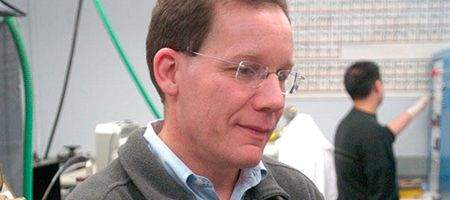Harvard scientists have, for the first time, merged human tissue with a network of bio-compatible nanoscale wires to create ‘cyborg tissue’.

They’ve developed a system for creating nanoscale ‘scaffolds’ which can be seeded with cells which later grow into tissue.
“The current methods we have for monitoring or interacting with living systems are limited. We can use electrodes to measure activity in cells or tissue, but that damages them,” says Professor Charles M Lieber.
“With this technology, for the first time, we can work at the same scale as the unit of biological system without interrupting it. Ultimately, this is about merging tissue with electronics in a way that it becomes difficult to determine where the tissue ends and the electronics begin.”
The resulting tissue is capable of sensing chemical or electrical changes.
“In the body, the autonomic nervous system keeps track of pH, chemistry, oxygen and other factors, and triggers responses as needed,” says Professor Daniel Kohane.
“We need to be able to mimic the kind of intrinsic feedback loops the body has evolved in order to maintain fine control at the cellular and tissue level.”
Using a process similar to that used to etch microchips, the team built mesh-like networks of nanoscale silicon wires, shaped like flat planes or in a mesh pattern.
These networks were porous enough to be seeded with cells which then grew in 3D cultures.
“Previous efforts to create bioengineered sensing networks have focused on two-dimensional layouts, where culture cells grow on top of electronic components, or on conformal layouts where probes are placed on tissue surfaces,” says former student Bozhi Tian.
Using heart and nerve cells, the team successfully engineered tissues containing embedded nanoscale networks – without affecting the cells’ viability or activity. Using the embedded devices, they could thendetect electrical signals generated by cells deep within the tissue, and measure changes in those signals in response to cardio- or neuro-stimulating drugs.
They also constructed bioengineered blood vessels, and used the embedded technology to measure pH changes – as would be seen in response to inflammation, for example – both inside and outside the vessels.






